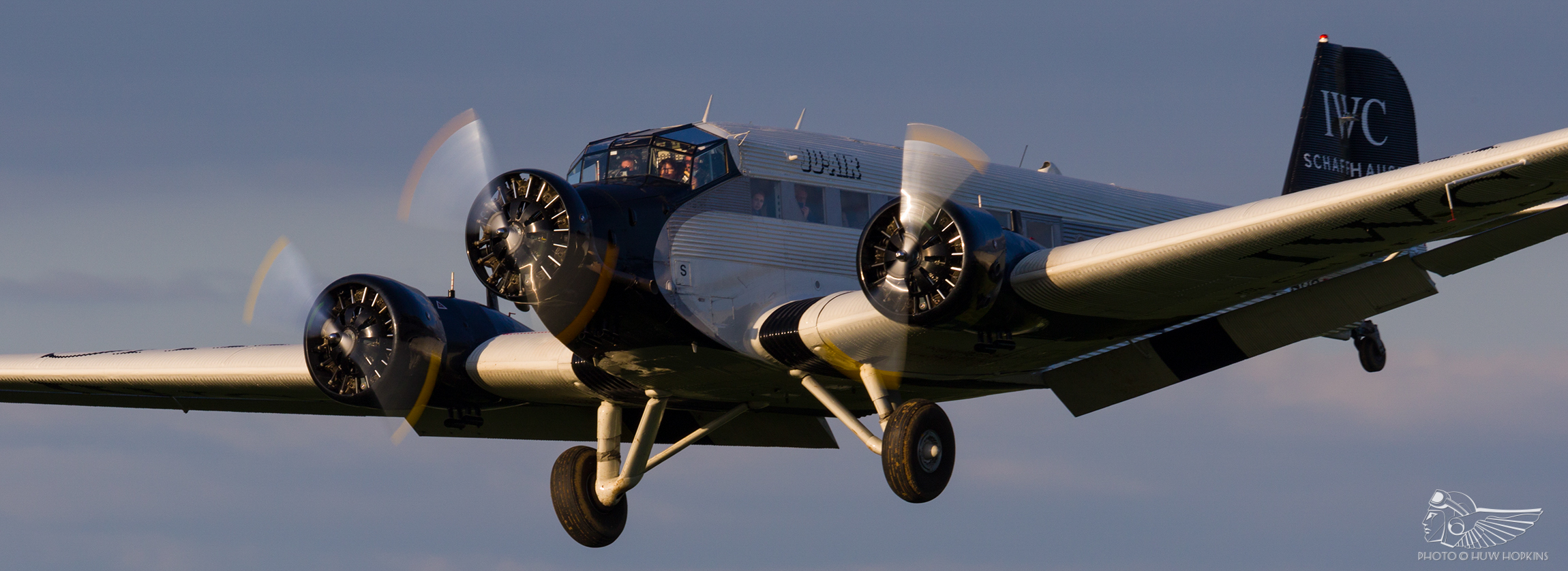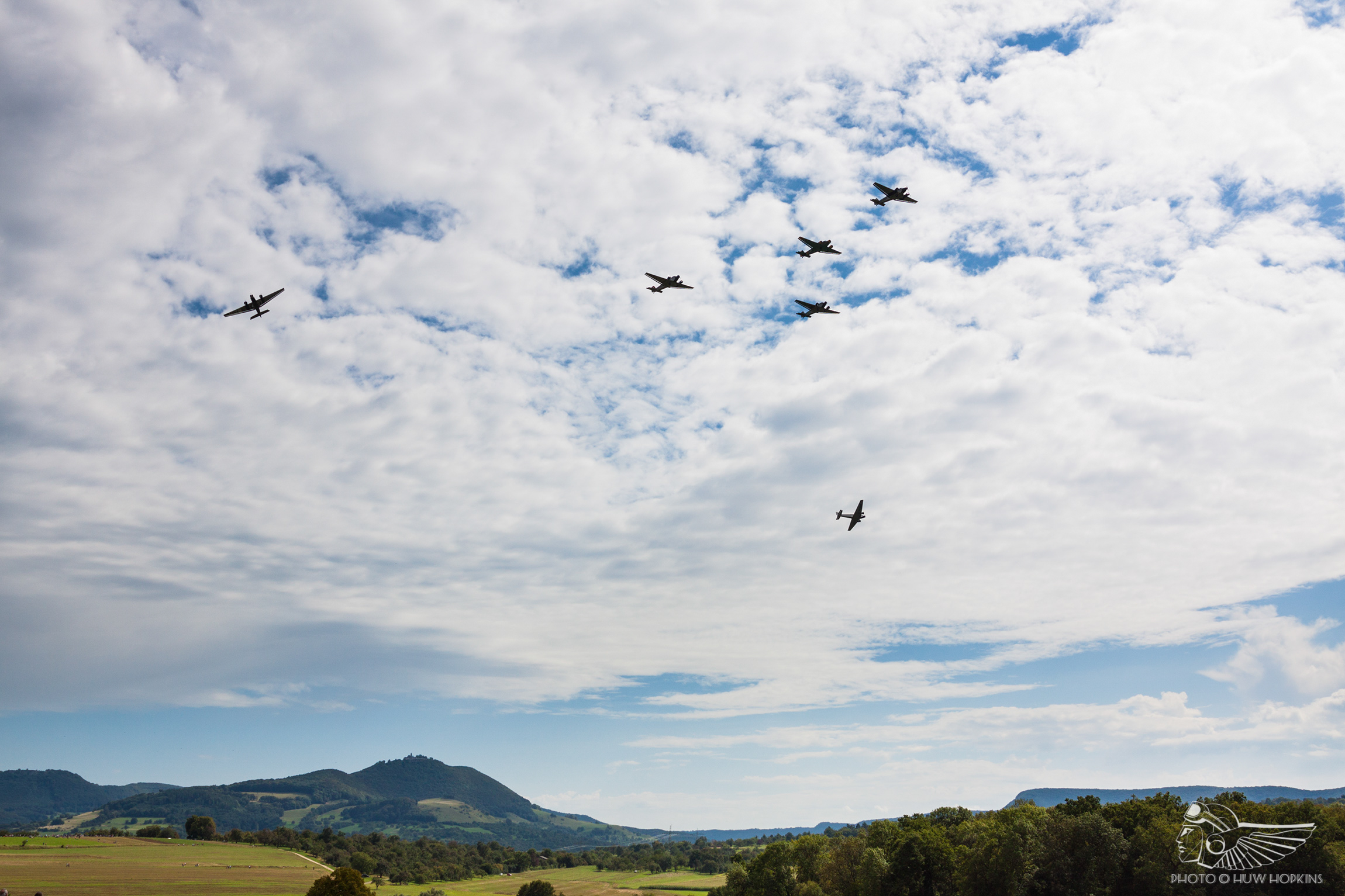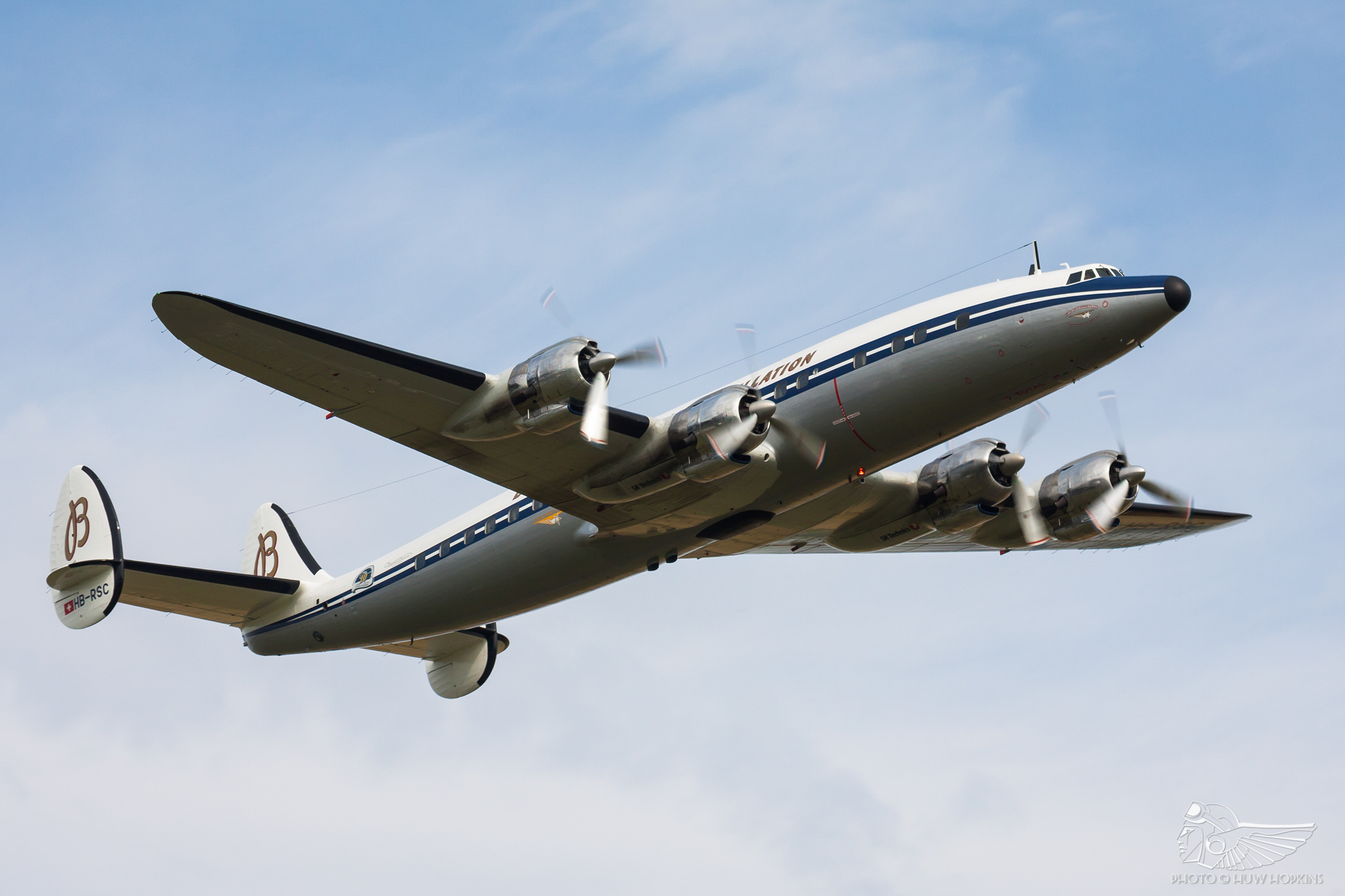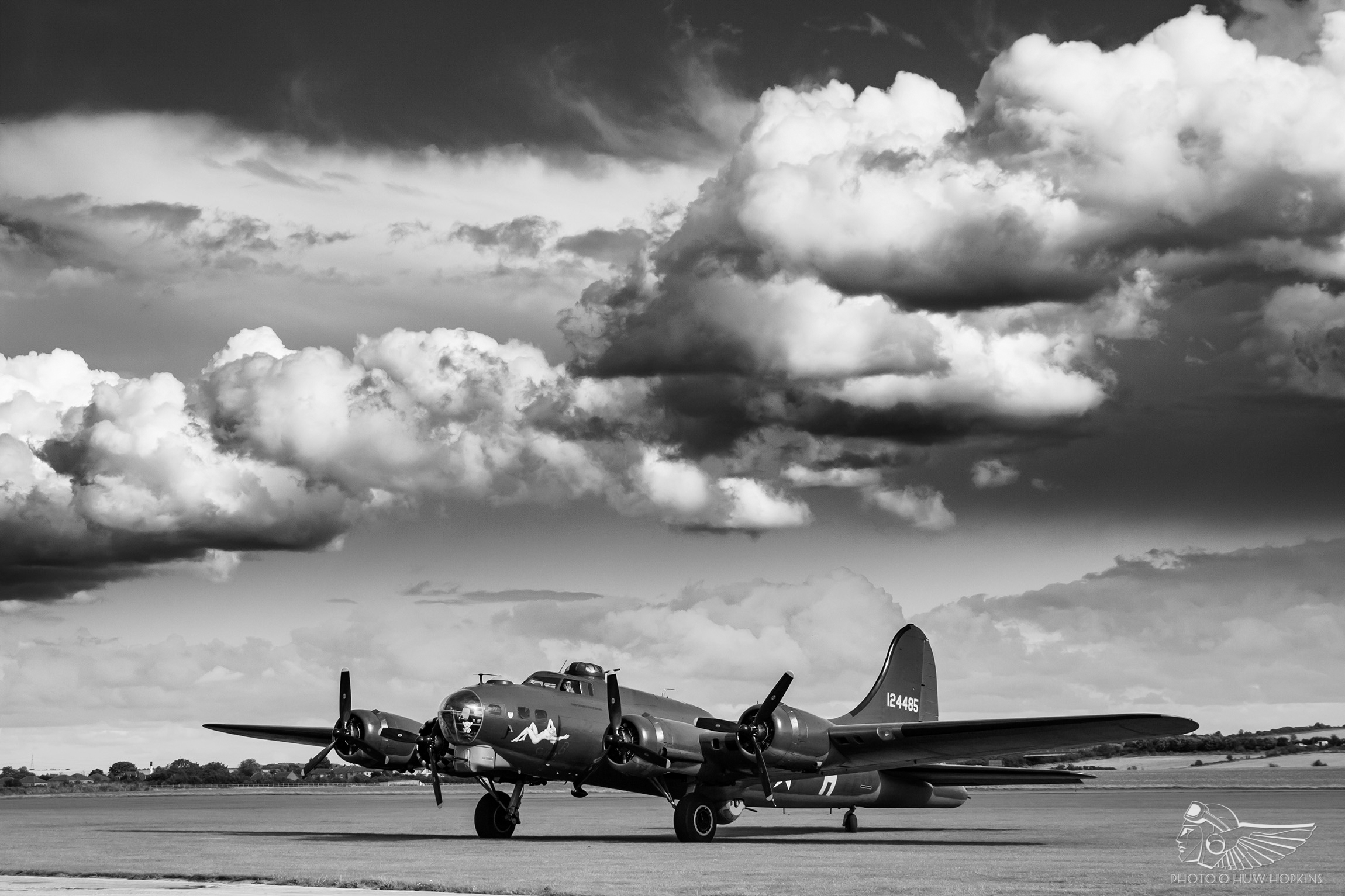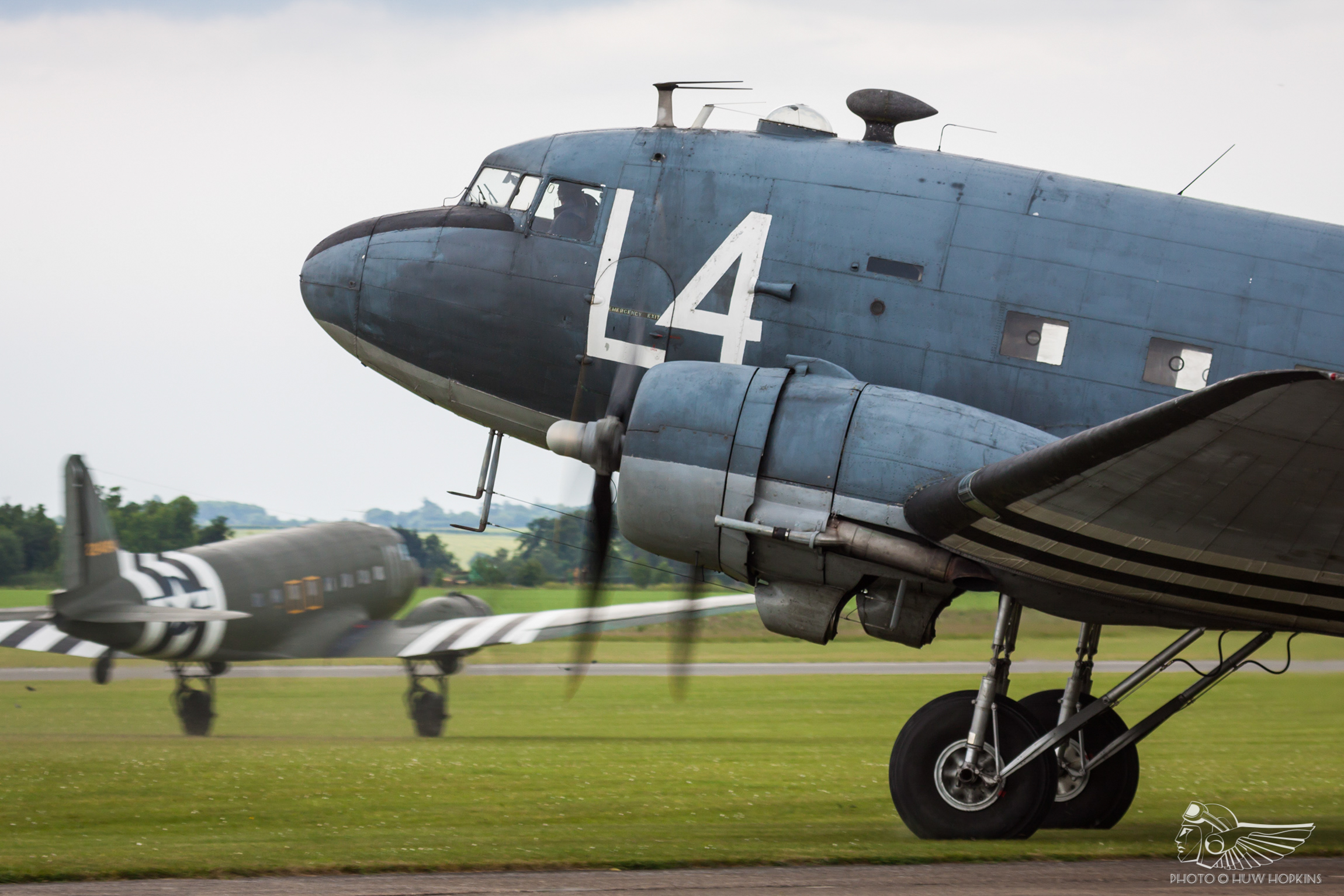The operation of heavy, multi-engine vintage aeroplanes naturally poses a greater challenge than smaller, single-engine historic types. Every aspect is multiplied – the complexities of restoration, insurance, maintenance, hangarage, operating costs and crew requirements being just some of the factors present, and as a result, Europe’s population of vintage ‘heavies’ is experiencing significant pressure and setbacks.
The Junkers Ju 52 has been one of the most popular large vintage types to grace the skies over Europe in recent decades, with several examples of the venerable airliner operated on regular pleasure flight duties. In 2014, Swiss organisation Ju-Air carried 14,000 passengers with its fleet of four Ju 52s. Their operation was blighted by the loss of Ju 52 HB-HOT in the Swiss Alps, killing three crew and 17 passengers in August 2018. The subsequent investigation by the Swiss Transportation Safety Investigation Board (STSB) discovered traces of corrosion in the wing spar, albeit this was not attributed to the accident, the remaining Ju 52s now requiring expensive and lengthy investigatory and, if necessary, remedial work before they can be returned to flight. The Ju 52s were formally grounded in November 2018 pending these investigations, and Ju-Air has now announced it will complete work on all three remaining Ju 52s before resuming flight operations in 2021.
Whilst Ju-Air seeks a way forward for the continued operation of its Ju 52 fleet in some capacity, Lufthansa has simultaneously withdrawn funding for its own Ju 52, citing financial reasons for the cuts. D-AQUI was also a regular pleasuring flyer and airshow performer across Europe, estimated to have carried as many as 250,000 people over the past 30 years. The aircraft also required remedial work before it could fly again, and sadly Lufthansa has taken the decision to retire the Ju 52 into an as-yet undecided museum. It seems the flying days for this particularly lovely and previously very active example of the type are over.
This leaves the Ju 52 scene in Europe depleted and waning. Looking back, the Oldtimer Fliegertreffen at Hahnweide in 2011 and 2013 mustered formations of six and five Ju 52s respectively, and have otherwise always had a handful of the type present. The 2019 event now looks to be devoid of ’52s – a sad sign of the times. Having enjoyed an active collective of the type for so long, we’d perhaps grown complacent to enjoying Tante-Ju operations in Europe. As with everything in aviation, and perhaps in life, nothing is ever assured. Hopefully lessons can be learned from the investigatory work and the remaining Ju-Air ’52s can find a secure and stable future.
Lufthansa’s axing of its Ju 52 compounds the controversial decision made in 2018 to halt the restoration to flight of its Lockheed L-1649A Constellation Starliner, which had been progressing for over a decade in Auburn, Maine, USA. In that time a huge amount of work had been invested on the airframe and the end of the project was edging into sight, but despite this and the investment of €90 million into the project by Lufthansa (and a further €100 million by various corporate sponsors), the axe has fallen. This has been a muddied affair, with Lufthansa cancelling the project before notifying its workforce, and citing dubious reasons for the cancellation including the financial viability of the project (despite the loss of their €90 million investment) and unfounded concerns regarding the availability of the correct 120 octane avgas required to operate the Starliner (100 octane has been proven to work) – many have been understandably disappointed by their conduct. Lufthansa now claims that its plan is to disassemble the Starliner and transport it to Germany, where restoration may recommence to static condition and eventual display in an air museum of its choosing. Perhaps a “second best” future may be found with the Starliner being displayed alongside Lufthansa’s static Focke Wulf Fw-200 Condor restoration once both are complete, but it is nonetheless a shame that Lufthansa has seen fit to neglect the positives that such a high-profile project and iconic aircraft could bring to its brand.
With hopes of a second airworthy Connie in Europe sadly dashed, operators of the sole airworthy example, Super Constellation Flyers Association (SCFA) of Switzerland, made a catastrophic discovery at the beginning of 2019. The main wing spars require inspection, and possible repair, requiring the removal of both wings – a huge undertaking. The cost of the work is estimated to be €17-20 million and is expected to take four years to complete.
Sadly the SCFA failed to secure the requisite funds and announced its liquidation. As such, the hopes of returning the Connie to flight are all but gone, though the board has pledged that as they move to decide the future of the aircraft in coming weeks, they will do everything they can to ensure public access to the aircraft in the future. One option previously outlined was the establishment of a museum for the Constellation at the SCFA home at Basel-Mulhouse-Freiburg airport. This would also require significant funds as the aircraft is currently at Zurich, where it was parked when the issues were first discovered. Sadly it seems the candle has been snuffed out for Europe’s only flying Connie.
A similar case has been seen with the previously airworthy British Eagle Douglas DC-6 in the UK, which stopped flying in 2009 owing to the nearly quarter of a million pound yearly running costs being deemed unsustainable going forward. Following several failed movements to resume flight operations, it seems static display at the new South Wales Air Museum at St Athan has now been secured. Although this will require significant cost and effort to move the aircraft by road, it should at least save it from the scrap man and offer a more permanent public display for the DC-6. The most positive outcome possible from this unfortunate situation, I hope you’ll agree.
The downturn continues elsewhere. The following the off-airport landing of Air Service Berlin’s Schönefeld-based C-47 D-CXXX in 2010, the Förderverein Rosinenbomber e.V. was formed to seek a way forward to repair the pleasure flying C-47. With the amount of damage sustained, it was decided to purchase another Dakota and use D-CXXX as a parts donor to get the new aircraft up to pleasure flying standards. In 2013 G-AMRA was purchased from the UK and flown to Berlin. Unfortunately, after nine years of work the project has been cancelled owing to financial reasons, with both of the aircraft unlikely to fly again. The ex-Breitling Dakota has also recently been sold to the fringes of Europe, to Ali Ozturk’s growing collection in Turkey. Whilst an excellent addition to that fleet, the loss of another regular pleasure flying and airshow aircraft in central Europe will be deeply felt.
On the amphibious front, the sole surviving Dornier Do 24 is still receiving repairs following damage sustained during a water landing in Austria where the hull struck some floating debris, but these are likely to be protracted due to the associated costs, and it is likely to be some time until that flies again. The Dutch Catalina Association has often warned about the difficulty funding the operation of its Cat’; sadly the burden became unsustainable and, following further engine issues, the PBY has been sold to the Collings Foundation in the USA. The aircraft has now flown again following some engine issues and will imminently depart for its new home, leaving just the Duxford and French-based examples in Europe.
One type that sadly never made it to Europe was the Aviodrome’s Convair 340. Having sat at Wonderobom airport, Pretoria, South Africa, since 2009, the prop-liner had been restored and painted in Martin Air colours. The aircraft was on a local passenger flight prior to delivery to Holland when the left engine caught fire on take-off and, unable to complete a return to the airport, it crashed, striking a factory, killing two and seriously injuring more. A sad end to the project.
The picture does not brim with hope, but there are glimmers still to be found. In such trying times, some are looking into ways of diversifying. In 2018, B-17 Preservation Ltd’s Flying Fortress Sally B received the fewest number of airshow bookings to date, and thus Ellie Sallingboe is looking to other avenues to help support the aircraft. Whilst the CAA may soon grant SSAC passenger flights to multi-engine types, she believes this may not be feasible, for the time being at least, in the B-17 due to costly changes required for passenger safety. Another income stream may have been found in the interim; in 2018, the B-17 flew an air-to-air photo sortie for paying photographers (trailing a Skyvan over East Anglia) which seemed to be successful and is an avenue B-17 Preservation may look to in the future with more ‘fly alongside’ and photo flights. The opening up of SSAC flights to multi-engine types may work in favour for others such as Aero Legends, who recently purchased C-47 Skytrain Drag-Em-Oot to add to their multitude of pleasure flight and ‘fly alongside’ offerings.
The 75th anniversary of the Normandy landings and the 60th anniversary of the Berlin Airlift promise some of the largest gatherings of Dakotas since the Second World War, and these events will hopefully see aircraft take part from many countries including the UK, France, Netherlands, Russia, and a large contingent from the USA. The gathering is set to begin at Duxford and move on to Normandy, before a smaller number transit to Berlin later in the month. The gathering should offer a positive marquee moment for heavies in Europe, particularly given the inevitable international media coverage in will rightly receive. Later in the year, the UK will welcome another C-47 to the skies when Night Fright’s restoration concludes. The veteran C-47 is currently undergoing restoration at Coventry, and should be one of the most authentic C-47 restorations of recent years. What an addition to the scene that will be.
Looking further ahead, work continues periodically each winter on Avro Lancaster NX611 Just Jane at the Lincolnshire Aviation Heritage Centre (LAHC) at East Kirkby in the effort to eventually return the bomber to flight. The work is being conducted in segments so that Just Jane can continue her popular taxying experiences and appearances at the LAHC events during the summer months. Whilst it’s true that many large vintage types lack popularity with airshow organisers (higher booking cost doubtless being a contributing factor!) and the general public alike, that cannot be said of the Lancaster. Should Just Jane end up taking flight and joining the airshow circuit, it will undoubtedly be an enormously popular addition.
We may well see a continuation of the downturn in heavy vintage aircraft operators before we see improvement, should it ever improve beyond its current position, depending on the success of efforts by those such as Ju-Air in the coming months and years. There’s no denying the significant blows dealt to the European population of historic heavies, but hopefully stability will return in due course. In the meantime the mantle will be passed to some of the longstanding regulars; the BBMF Lancaster, B-17 Flying Fortress Sally B, ARCo’s Bristol Blenheim Mk.1F which has been enjoying long and successful display seasons since its return in 2015, numerous DC-3 and C-47 operators, the Flying Bulls’ DC-6 and B-25 which continue to be seen all over Europe, and the Nord Noratlas which recently impressed at the inaugural Melun Air Legend near Paris. Rejoining the circuit too thsi season will be the Dutch based B-25 Mitchell, back after a period on the ground! For now, we can only appreciate and cherish the aircraft we do have still to enjoy and, if possible, support them and the ongoing ventures and efforts to return others to the skies.
![]()


